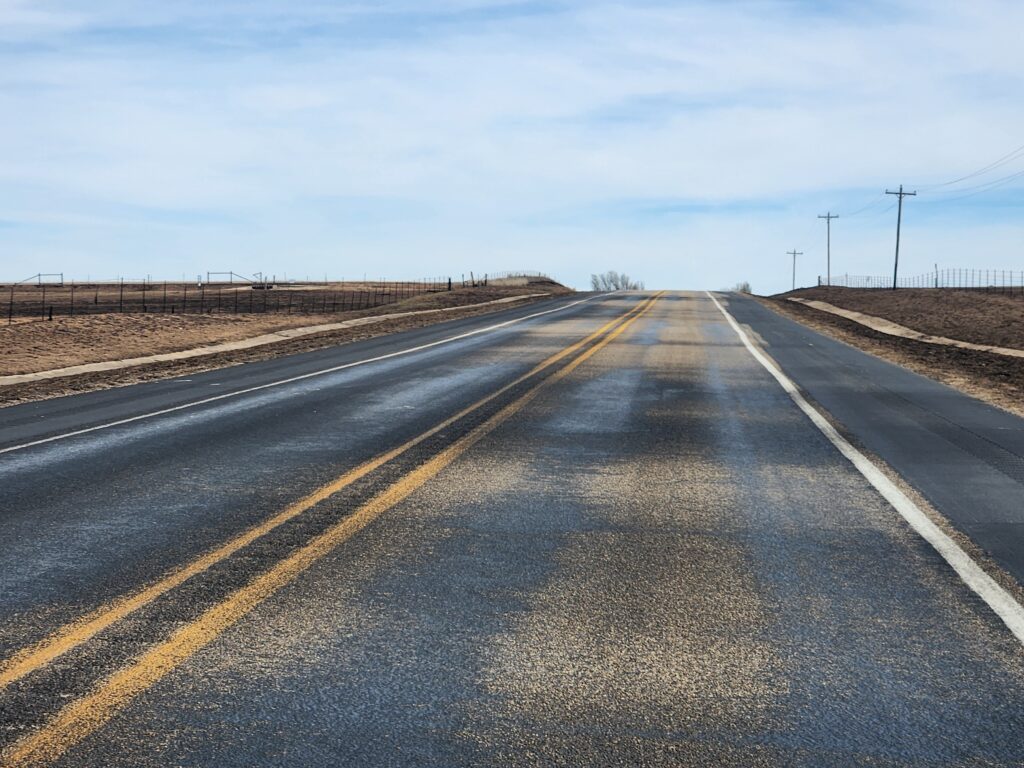
From High Winds to Apocalypse: Living and Working Through the Smokehouse Creek Fires
On February 26, 2024, a cold front moving into Amarillo, TX from the NNE carried with it heavy grass fire smoke, a smell all too familiar to Texas panhandle residents. However, this was not a typical roadside or pasture fire, which are common sights in the area. This plume was different and indicative of something larger, and more sinister. As eye and throat irritation set in, my wife and I took to the news, social media, and the Texas A&M Wildfire map to learn that three large fires were blazing northeast of Amarillo: the Grape Vine Creek, Windy Deuce, and Smokehouse Creek fires. Officials quickly ordered evacuations within the four counties impacted by the burning areas.
 Years of lower-than-usual precipitation had left the Texas Panhandle in a drought; therefore, it was no surprise when, fueled by dry, late winter conditions, crispy winter vegetation, and wind gusts of nearly 50 miles per hour, these fires quickly got out of control and devoured Texas farm and ranch land. The Smokehouse Creek fire made history as the largest wildfire ever recorded in Texas by burning approximately 1,058,482 acres. Combined, the three fires burned over 1.26 million acres in the coming weeks before they were 100% contained. While these fires were not initiated by Texas’s most extreme drought—the driest year on record occurred in 2011—the frequency of Texas droughts and the increase in unusually high winds that downed the power lines that sparked these fires should give us all cause for concern.
Years of lower-than-usual precipitation had left the Texas Panhandle in a drought; therefore, it was no surprise when, fueled by dry, late winter conditions, crispy winter vegetation, and wind gusts of nearly 50 miles per hour, these fires quickly got out of control and devoured Texas farm and ranch land. The Smokehouse Creek fire made history as the largest wildfire ever recorded in Texas by burning approximately 1,058,482 acres. Combined, the three fires burned over 1.26 million acres in the coming weeks before they were 100% contained. While these fires were not initiated by Texas’s most extreme drought—the driest year on record occurred in 2011—the frequency of Texas droughts and the increase in unusually high winds that downed the power lines that sparked these fires should give us all cause for concern.
On March 4, 2024, a week after the fires began and while flames were still raging in parts of the Panhandle, a work trip took me through the Smokehouse Creek Fire area. This drive was the stuff of apocalyptic nightmares. The roads were eerily quiet. Aside from utility vehicles assessing downed power lines and Texas’s famous oil and natural gas infrastructure, the only humans I encountered were farmers scrambling to feed and water their surviving cattle on the now blackened hellscape. Areas of highway were scorched. The horizon was littered with charred Earth contrasted with roads and surviving homes and buildings. Dead cattle could be seen in pastures where they were unable to escape the smoke and flames. It was horrific.
In all, the Smokehouse Creek fire took two human lives, an estimated 7,000-10,000 cattle, and burned hundreds of millions of dollars worth of homes, buildings, and agricultural land. The United States Department of Agriculture (USDA) estimates 447,944 acres of grassland/pasture used for cattle grazing was burned and approximately 18,695 acres of cropland where winter wheat, sorghum, cotton, corn, and other crops are grown could be affected. There is no way to determine the true cost of these fires and what it will take to fully recover. For some, full recovery may not be possible.
It was determined the Windy Deuce and Smokehouse Creek fires were caused by downed power lines due to high winds. While the Texas Panhandle is well-known for high winds spurred from its proximity in a low-pressure area East of the Rocky Mountains, locals believe that the winds have increased in recent years. It is not uncommon to hear the words “I remember it being windy, but never like it has been these past few years.”
This begs the question: were the high winds that caused the downed power lines and fueled the ferocity of these fires part of large-scale changes happening in our atmosphere? Are these by-products of natural weather patterns, or is it that the climate’s changes are setting up perfect disaster situations?
As a scientist, I found myself dwelling on these fires’ causes: are the droughts and the increased winds evidence of Mother Nature at work, or are they a result of climate change? This led to my researching the region’s climate history and wildfires as a whole. Expectedly, this turned up data supporting a link between the climate’s everlasting balancing act of cycles and fluctuations, occurring since the beginning of time, and wildfire occurrences. And, data collected by the USDA and National Interagency Fire Center found a correlation between the number and severity of U.S. wildfires and the warmer, drier periods of these cycles. What was a surprise was the data shows that current peak wildfire months are occurring approximately one month earlier than historical peaks. From 1984 to 2001, the peak wildfire month was August, but from 2002 to 2020 it moved up to July. Whatever the cause, fires are happening earlier and more frequently than they did just 40 years ago. This change deserves further investigation.
My distinction as a person who not only lived through but also had to work under the Smokehouse Creek fire’s conditions is one I would have gladly foregone. I wouldn’t wish wildfire on anyone. Yes, fire is natural and necessary, and as long as the fuel is available, fires will burn. Beyond science, it is our responsibility as humans to understand what triggers and fuels these fires and then take necessary steps to protect ourselves and the land around us. I, for one, will be keeping an eye on the patterns and preparing my family for the next potential disaster.

Waterborne Environmental, Inc. Hired to Create Online Dashboard That Tracks Nutrient Loss Across the State of Missouri
READ MORE

Swimming with Bacteria: Water Quality Concerns at the 2024 Paris Olympics
READ MORE

The Right Tool – Multidimensional Models
READ MORE



